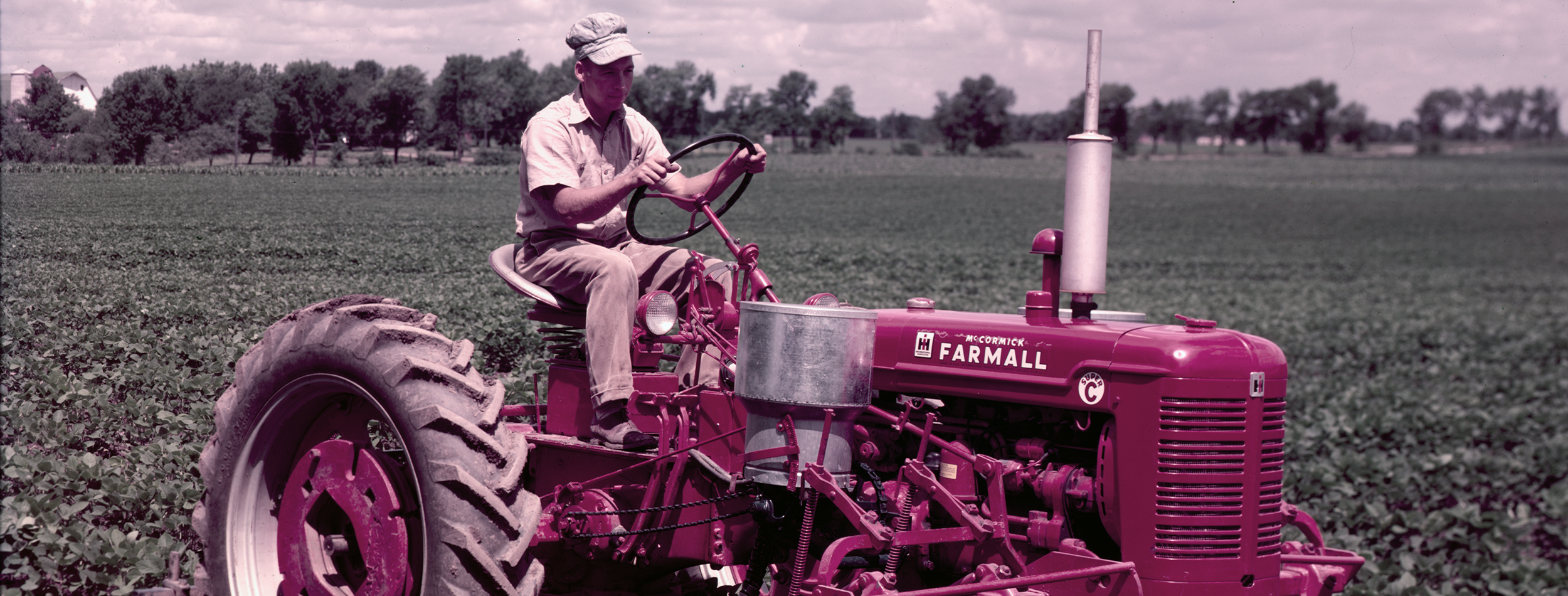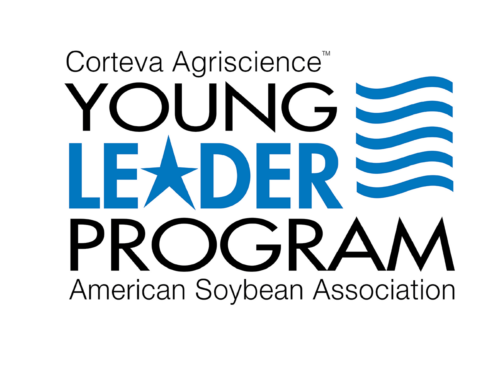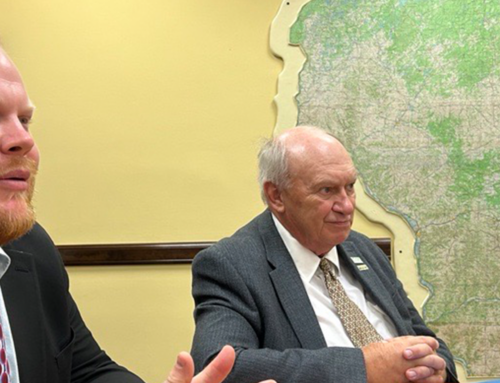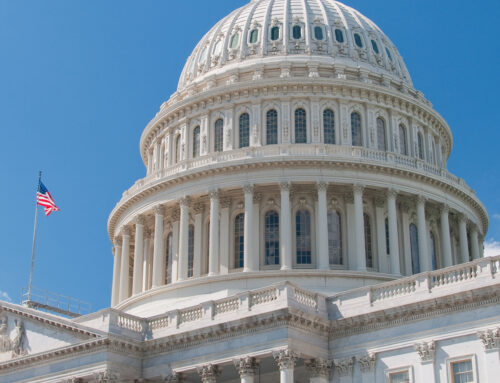
Living history: WSA’s humble beginnings blossomed into a bright future
Share This
Kenlon Johannes arrived in Wisconsin in 1986 ready to work.
“In the 80s, it was getting tough (to farm),” Johannes, who farmed in Nebraska, said in summer 2023. “Interest rates were high, and I didn’t want to lose the farm. I was looking for other opportunities and the Wisconsin position opened up.”
An apartment in Madison furnished with a card table, telephone and folding chair was all Johannes needed to start solidifying the Wisconsin Soybean Association (WSA) more than a decade after its establishment.
“I started making phone calls to figure out where the Wisconsin Soybean Association and Wisconsin Soybean Marketing Board (WSMB) would be held,” said Johannes, WSA’s first executive director.
Johannes, who previously led the Nebraska Soybean Association and became a pioneer in the growth of biodiesel, also grappled with geographic concerns.
“I didn’t know the city of Madison very well,” he said, “but I was greatly honored by their trust in me to set up their organization.”
Though he only served as executive director from 1986-1988 before continuing a distinguished career in agriculture, Johannes helped build an infrastructure and cohesiveness within WSA and the Wisconsin Soybean Marketing Board (WSMB) that continues in the 50 years since the state’s farmers organized an advocacy group that spoke up for agriculture.
“I think what Wisconsin is doing right now with the cooperation of the two boards is fantastic,” Johannes said. “The two need each other and I’m so glad that the boards are still cooperating and getting along and working together.”
Blurry beginnings
In June 1973, a ribbon-cutting ceremony was held for a $9 million soy sauce plant in Walworth. At the time, the plant – which produced 2.6 million gallons of soy sauce each year – was considered the biggest Japanese business investment ever made in the U.S (the plant later doubled in size and became the nation’s No. 1 soy sauce brand). The next month, the Wisconsin Soybean Association was formed to lobby on behalf of the state’s soybean industry at the state and federal levels. The organization soon became an affiliate of the American Soybean Association (ASA), which supported a series of district representatives to help establish state organizations. Preserving records of WSA board leaders and legislative successes likely wasn’t a top priority; and alas, many of the key players who helped create WSA have since deceased. Thus, much is unknown about the first dozen or so years of the fledgling organization.
“We did everything from talking to the legislature to lobbying,” said Nancy Kavazanjian, who served as WSA director in the late 1980s. “But it was a small organization and people didn’t really care much about soybeans in the ‘80s.”
Not even ASA had much in the way of Wisconsin soy-related records (trust us, we tried!). One connection led to another to piece together a broad history of WSA. But memories, after all, fade over decades. We do know that Evansville producer Vince Drendel served on the inaugural WSA board of directors and was elected its first president in 1973, along with representing Wisconsin on ASA.
The fledgling organization set up shop at the University of Wisconsin-Madison. In the late 1970s, Dave Drennan, an ASA field services director, was stationed in Wisconsin to visit farms and garner support for a state checkoff. Traversing the state, he was surprised at the number of potato, cabbage and onion farmers.
“I didn’t realize it was such a ‘truck crop’ state,” said Drennan, who would later receive ASA’s Lifetime Achievement Award in 2014. “It was strange to me. I had no idea they had those kinds of crops in Wisconsin.”
While traveling the Dairyland’s backroads, Drennan learned that Wisconsin farmers with co-op signs on their operation were more receptive to a checkoff than farms without signs.
“Those dairy farmers realized the value of the checkoff and how it could promote a commodity,” Drennan said. “But in the late ‘70s, farmers didn’t fully realize what the soy checkoff could do for them and there was concern from growers about a checkoff raising feed costs.”
Drennan was undeterred. He coined a nickname for soybeans: “The gold that grows.” He returned to Wisconsin in the early 1980s to help establish the Wisconsin Corn·Soy Expo. Drennan worked for Bill Tiberend, who also played a role in creating WSA. In his recollection, Drennan joined Tiberend in Madison for a meeting with WSA and Wisconsin Corn to plan the inaugural conference.
“Those were my times in Wisconsin,’” Drennan said. “We did what we could to help grow the organization.”
He also noted, as the potato and cabbage farmers began incorporating soybeans in their crop rotation, a noticeable lack of weeds.
“Those farmers had the cleanest fields,” Drennan said. “They knew the reason to have good weed control.”
Drennan, a self-described history buff who spent his entire career in association management, said the voluntary sacrifices made by WSA farmers over a half-century of advocacy are worth honoring.
“Fifty is a big number, and a lot of people need to realize that a lot of people gave freely of their time to build (WSA),” Drennan said. “Being on a board of directors for a nonprofit, voluntary organization – you don’t make any money; in fact, it costs you money being away from your operation. But they were on the board to help their neighbors and industry.”
Difference maker
Drennan’s efforts in pursuing a checkoff weren’t in vain. The checkoff amendment, which required more than a simple majority, failed to pass in the late 1970s. But education was the key, and a small state checkoff was later enacted in the early 1980s, followed by the national checkoff program that began in 1991. In the ‘80s, the Wisconsin Federation of Cooperatives was tasked with dispersing the funds toward small research and promotional projects.
“In those days, you usually grew soybeans in a rotation if you were a crop farmer, and then took them to market,” said Kavazanjian, who currently directs national checkoff resources as a director with the United Soybean Board. “You never really thought about building demand. But then we started to think, what else can we do with soybeans? And you look back in history, and saw that Henry Ford had all these great ideas for soybeans.”
As soybean acreage in Wisconsin expanded in the 1980s, Johannes moved to Wisconsin to oversee WSA. His wife and daughters arrived a few months later. At the time, the organization operated under a confederation alongside Wisconsin’s corn and soybean groups. Within a few months, Johannes moved into an office in Madison with a small staff. He juggled myriad tasks, from managing the books to structuring board meetings to the minutiae of writing and editing WSA’s newsletter.
“I did everything and it kind of helped me later because I understood how all these things worked,” he said. “But it was the farmers’ leadership and their trust in my ability to get them organized and viable that made the difference.”
Because checkoff dollars can’t be used for lobbying activity, Johannes took pride in ensuring Wisconsin’s checkoff program was implemented in full compliance with federal regulations.
“The structure allowed for (WSA), through its membership and corporate funds, to do the lobbying in Madison and Washington, D.C.,” Johannes. “The majority of the work done with the checkoff was on international and domestic marketing, new uses, research and those types of efforts.”
During Kavazanjian’s tenure on the board, she recalled WSA advocated on behalf of increasing use of soy ink to help build demand, thanks to strong newspaper circulation in the 1980s and ‘90s.
“Soy ink really did help in the marketplace,” she said. “The advantage of soy ink was that it didn’t rub off when you read a newspaper.”
By the 1990s, WSA joined a new movement by promoting soy-based biodiesel. It worked with a bus company in Cambridge to protect children from hazardous fumes.
“Now you fast forward 30 years later and we have renewable diesel, which is an even better replacement,” she said.
‘New attitude’
By the 1990s, Bob Karls became executive director of Wisconsin Soybean Program and helped guide the organization through a transformative growth period in both Wisconsin and the nation’s soybean industry. During Karls’ long run with WSA, the Corn·Soy Expo grew into a marquee event for the state’s ag industry.
“Bob was a great mentor to a lot of farmer-leaders and state associations,” said WSA Director Don Lutz. “And he really helped us grow and become more organized. … He always had our (Hill Visit) assignments lined up.”
WSA was forced to pivot again following Karls’ death in April 2022. The board responded to Karls’ death by rallying and taking a fresh look at the organization.
“From the national level to the state level, there’s a lot that people don’t know about WSA, and we just needed to educate people,” Past WSA President Steve Trzebiatowski said.
Those initiatives included more proactive legislative efforts both in Madison and D.C. (especially with urban lawmakers), broader engagement with Wisconsin media and a refreshed digital presence.
“Bob would be happy that we’re starting to move forward,” Trzebiatowski said. “As tough as it’s been, it’s been good to have good people to lean on.”
Pockets of WSA’s past may be lost to time, but the vision for its future is clearer. Through continued advocacy, membership outreach and education, WSA has positioned itself to cover more ground over the next 50 years – while also documenting the progress.
“I’m really happy that we’ve come on with a new attitude,” said Sara Stelter, WSA’s current president. “The people on our board are really involved and in tune to what we’re doing.”



